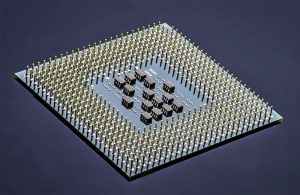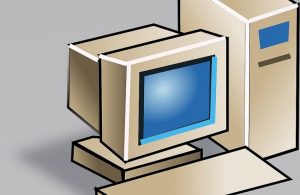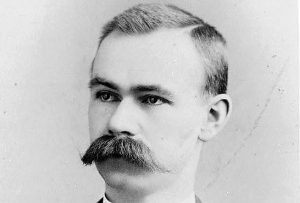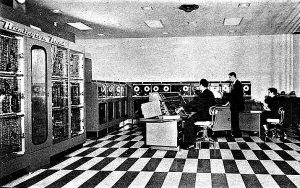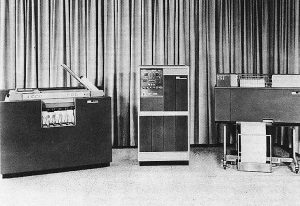Processor
A processor or microprocessor is the "brain" of a computer system. It controls the operation of all hardware and software and is also called a Central Processing Unit or CPU.
What is a processor?
It is the most important unit within a computer system or computer and is responsible for processing the single set of instructions and processes. It is the hardware device known as the system's brain.
There are many processors available and the specification of the processor is usually one of the first things to consider when purchasing a new personal computer. The type of processor and its speed have the greatest impact on the overall performance of a computer system. Processor performance is directly related to its operating speed and architecture.
A microprocessor is designed to execute logical and computational tasks with typical operations such as addition/subtraction, inter process and device communication, input/output management, etc.
Processor characteristics
The most notable characteristics of the processors are mentioned below:
- It is composed of registers, control unit, arithmetic
- It is made up of the core that is in charge of making the computer perform processes with greater speed, fluidity and time optimization.
- The cores are contained in a physical unit, but in reality, they are individual processors.
- It has cache memory, which implies the capacity to increase the performance of the applications that are installed in the computer. It accelerates the RAM memory and the hard disk.
- The faster the processor, the faster the instructions will be carried out.
- Processors that include two cores are called dual-core processors, while those with four cores are called quad-core processors.
- Today’s CPUs often include several processing cores, which work together to process instructions.
What is the processor for?
A processor, or “microprocessor,” is a small chip that can be found in computers and other electronic devices. Its primary function is to receive information and provide the appropriate result.
It is in charge of handling all the basic instructions of the system, such as processing applications for input and execution of mouse and keyboard. Most desktop computers contain a CPU developed by Intel or AMD, which uses the x86 processor architecture. Mobile devices, such as laptops and tablets, can use Intel and AMD CPUs, but they can also use specific mobile processors developed by companies such as ARM or Apple.
The processor is the part of a PC that acts as the computer’s brain, executes programs, sends and receives signals to connected devices to keep the computer running. Whether you use your computer or mobile device to send emails, take pictures, publish online, or surf the Internet, the processor is responsible for managing all the data and running all the programs that allow you to perform these tasks.
History
Processors have a history dating back to 1971 when the first microprocessor available on the market, the Intel 4004, was born. Since then, technology has improved by leaps and bounds. The history of the processor starts with Intel 8086 which was chosen by IBM for its first PC. The history of the processor is as follows:
- The computer was born with a multi cycle wired programming processor and its memory had only data, but no programs.
- EDVAC or Electronic Discrete Variable Automatic Computer emerged, which was Von Neumann’s first machine, containing data and programs within the same memory.
- The IBM 7030 emerged as the first computer to contain a segmented processor. From that moment on, segmentation has been a fundamental part of Computer Architecture.
- The IBM 360/91 took a huge step forward in the advances of segmented architecture and introduced dynamic detection of memory risks.
- The CDC 6600 was considered the first supercomputer.
- John Cocke created super scalar segmentation, which consisted of executing many instructions at once on the same microprocessor. The first super scalar processors were the IBM Power-1.
How it works
Remember that a processor is an electronic component that is responsible for processing all that information that our computer or our mobile device has. It can be said that it is the brain in charge of making everything work well.
It is composed of silicon and millions of transistors, which are the components that can be turned on and off by means of the electrical impulses they receive. These transistors, which are called bit and have values from 1 to 0, are distributed in internal circuits that are designed for the realization of the different mathematical operations. At the same time, these form complex circuits giving composition to the processor.
They also have a base plate or socket that is in charge of the connection between the computer and the devices.
Types
Some types of processors are as follows:
- Atom type processors: they have low power consumption and are created for netbooks and other devices specialized in networks.
- Celeron: they are used in desktop computers or desktop PCs for family use and web browsing.
- Pentium: dual-core processors for desktop computers.
- Core Processors: have more than one core, which is called Core, and are used in major processing, such as banks, finance companies, accounting firms, and businesses.
We can also find single-core, two-core, three-core, and multi-core processors.
Processor speed
Speed is measured in mega Hertz and giga Hertz. The speed of the processor’s internal clock that determines how fast it can process data is measured in gigahertz (GHz) or billions of cycles per second.
Architecture
The way internal blocks are interconnected is known as the processor architecture. All processors have different architectures, so the function speed is not the same.
How to cite this article?
Briceño V., Gabriela. (2019). Processor. Recovered on 3 January, 2025, de Euston96: https://www.euston96.com/en/processor/
